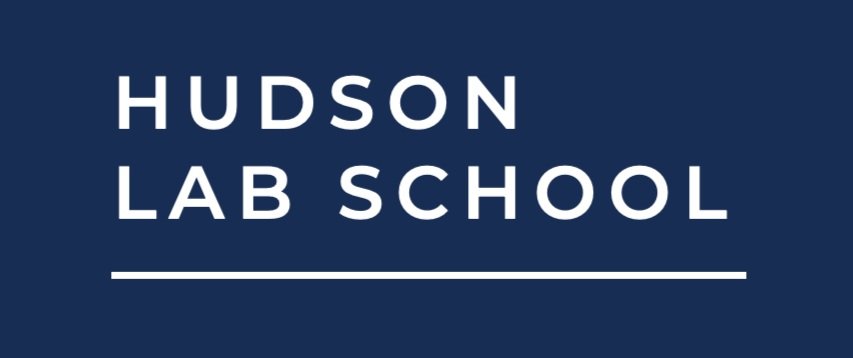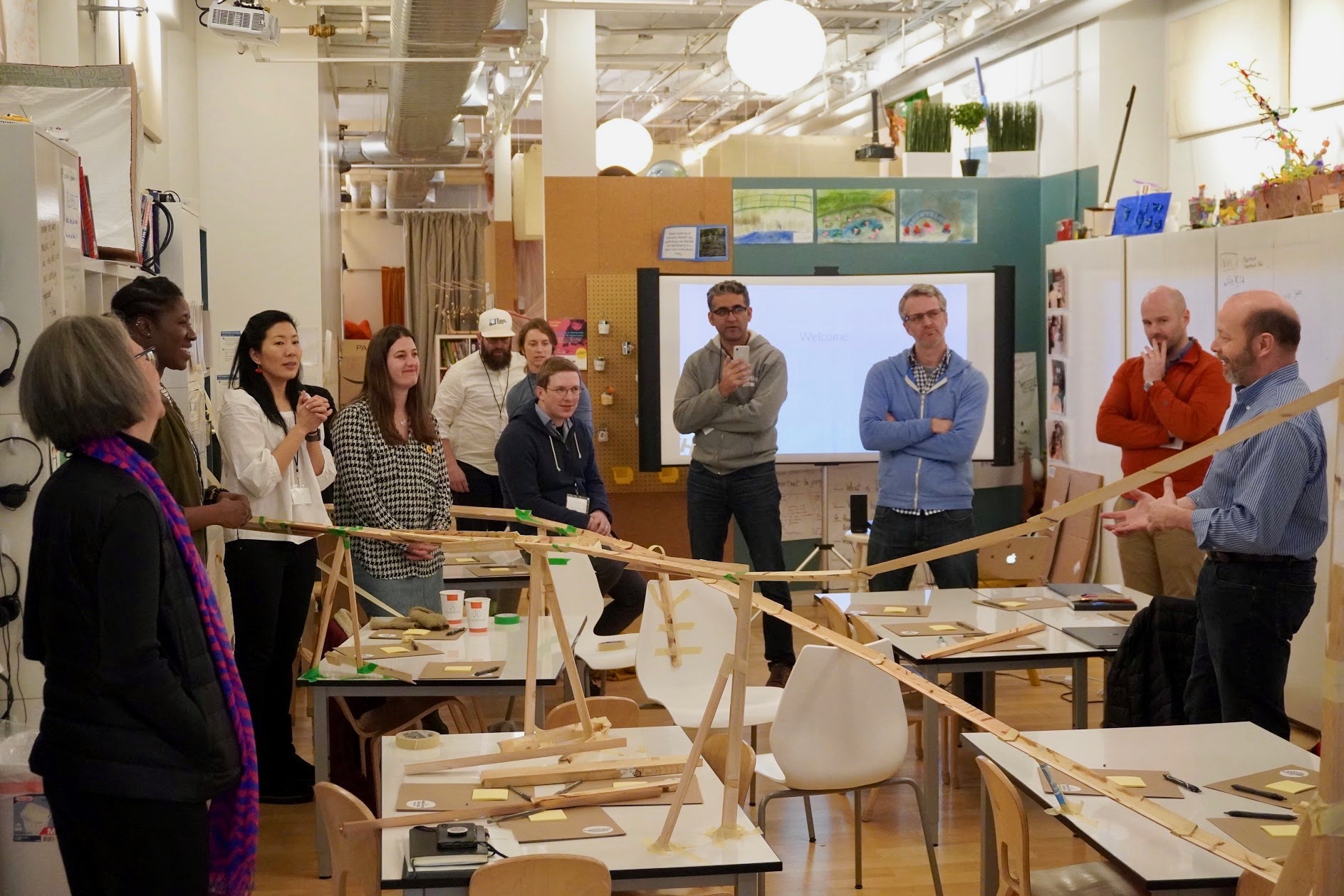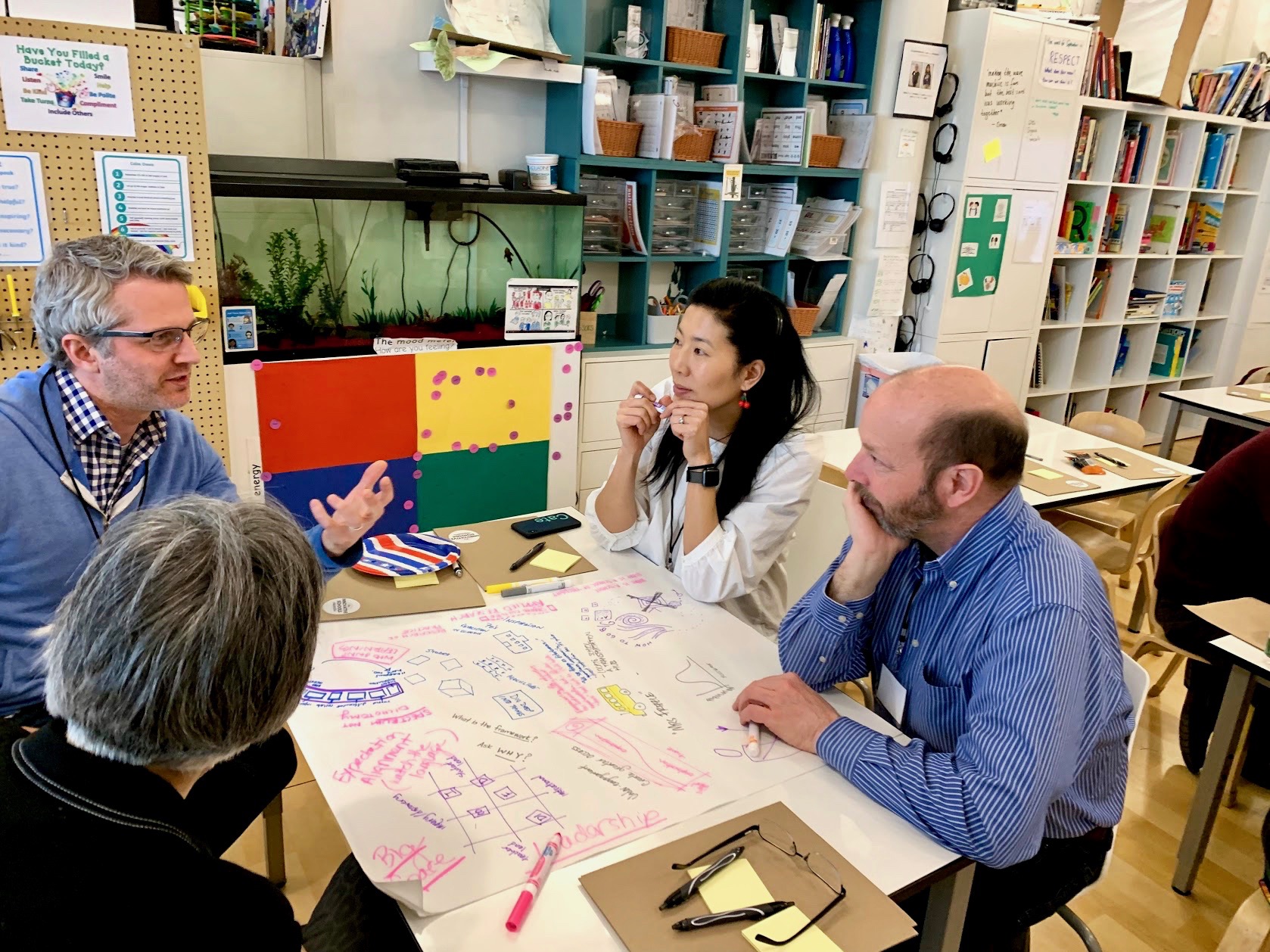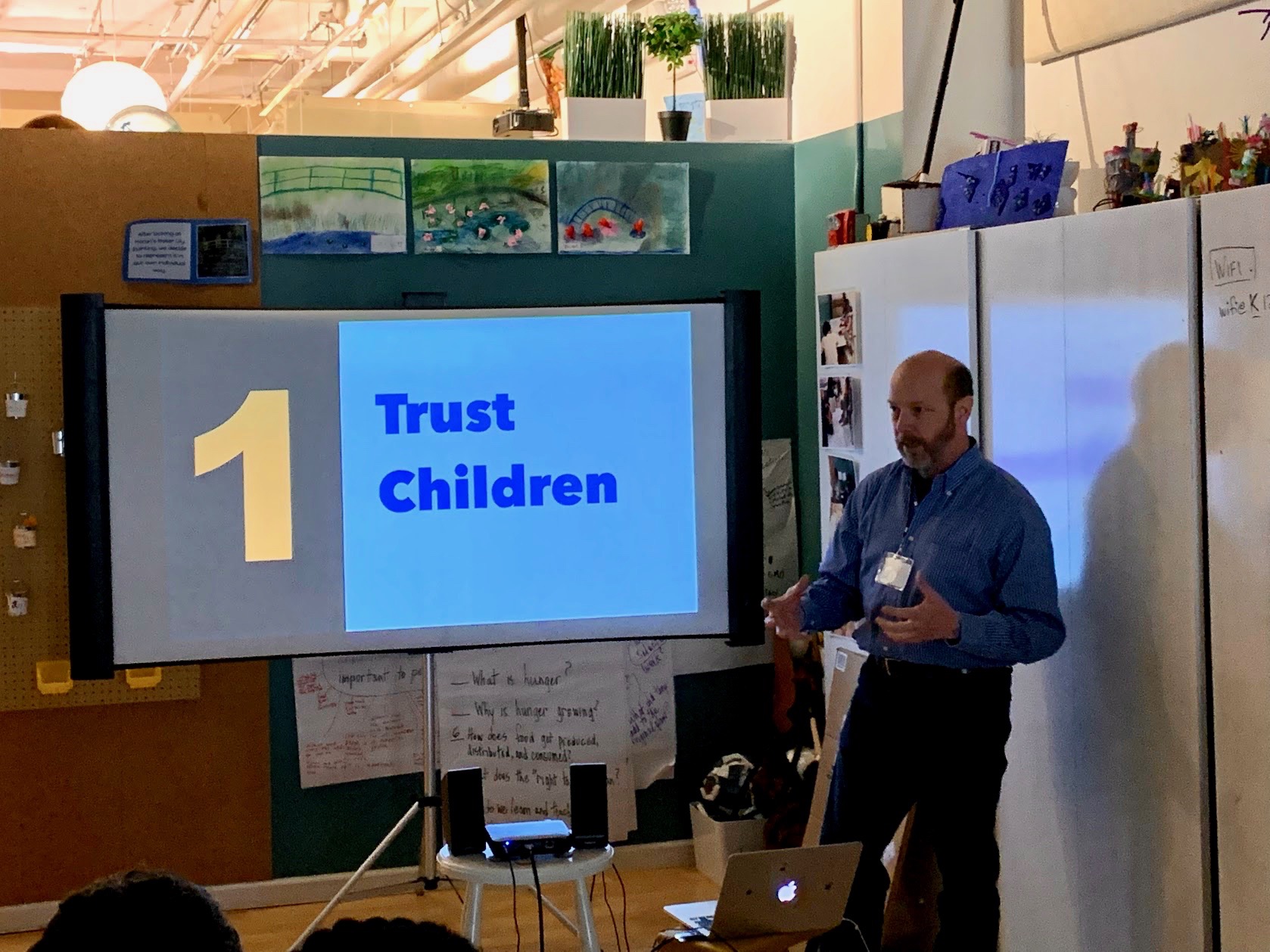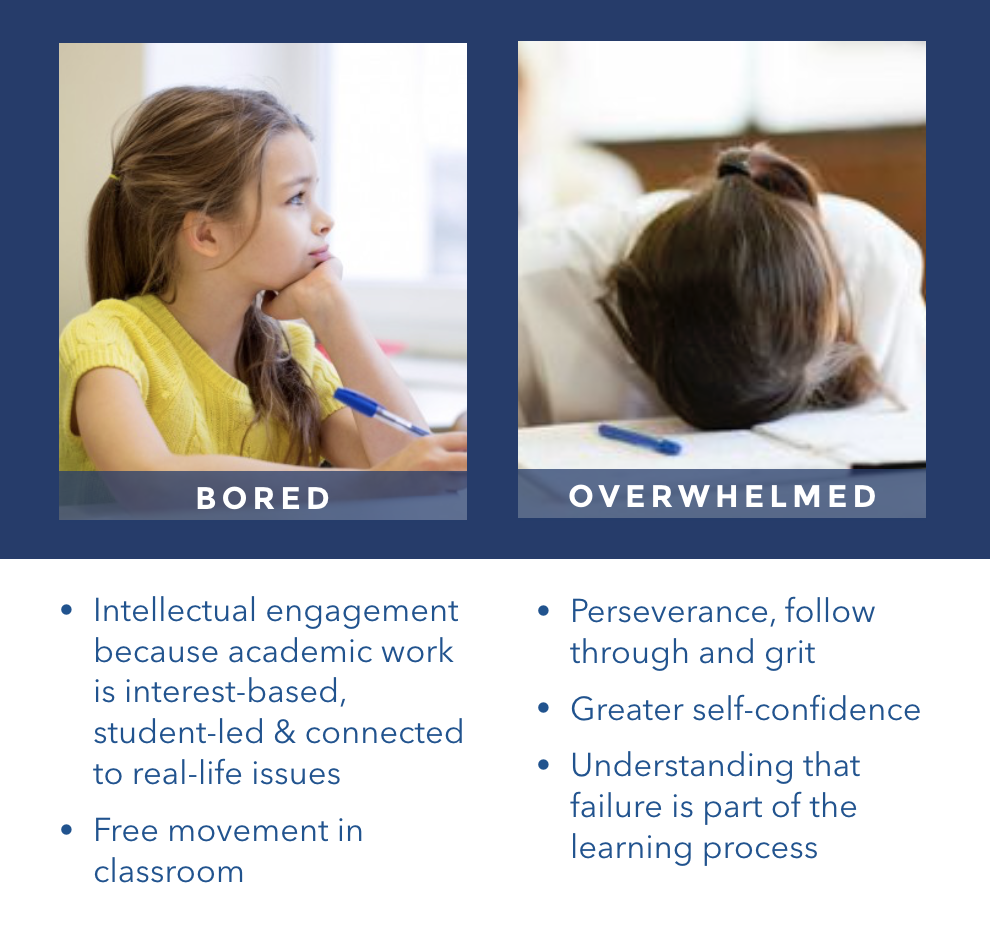
Innovative Schools Cooperative
Hudson Lab School is proud to be a founding member of Innovative Schools Cooperative (ISC), a new consortium of 10 like-minded innovative schools from around the country. Founders from these schools gathered in NYC at Portfolio School and the Klingenstein Center at Columbia’s Teachers College for an inaugural two-day summit. The summit “started with respect and humility: respect for the accomplishments of everyone around the circle and humility that allows for honesty, learning and growth.”
Gever Tulley, founder of Brightworks, put us in the right frame of mind with a team tinkering challenge. Using simple, grooved pieces of wood and tape, we were challenged to create a marble run that allowed us to experience the same process mistakes as our students.
Gever also presented 2.0 of his popular TED talk focusing on schools. In “5 Dangerous Things Every School Should Do,” he recommends “Trusting Children” first.
Everyone presented Pecha Kuchas. Not only did we learn what a Pecha Kucha is and how to pronounce it (it’ll surprise you), we learned that good speakers can deliver great impromptu presentations when equipped with confidence and humor.
On Day 2, we used Open Space Protocol to discuss hot topics like assessment, recruitment, finance and operations, human resources for unicorns, etc.
Jane Shore from Revolution School got us thinking about connecting research with classroom practices.
In small groups, we listened to one another’s challenges and lent our creativity to brainstorm and reframe those challenges.
It was an energizing and inspiring meetup and we are so grateful to the kickoff team for their amazing organization, hard work and leadership! In coming together as the ISC, we’re amplifying our individual voices around a shared vision and enabling a bigger impact on education.
The 10 founding members of The Innovative Schools Cooperative:
Brightworks (San Francisco, CA)
Hudson Lab School (Hastings-on-Hudson, NY)
Millennium Middle School (San Francisco, CA)
NuVu Studio (Boston, MA)
One Stone (Boise, ID)
Portfolio School (New York, NY)
Revolution School (Philadelphia, PA)
Synapse (Palo Alto, CA)
Workspace Education (Bethel, CT)
The Workshop Independent School (Brooklyn, NY)
Why Project-Based Learning Serves Girls (And Boys) Well
Part of a series of blog posts on Project-Based Learning. A collaboration between Portfolio School and Hudson Lab School.
Boys flock to innovative, hands-on, Project-Based Learning (PBL) schools like Portfolio School and Hudson Lab School, led there by parents who have come to realize -- often through difficult conversations with teachers and administrators -- that traditional school models do not serve their sons well. Boys chafe against the physical constraints of teacher-imposed desk-time and the curricular constraints of fractured learning-time. When visiting Portfolio School and Hudson Lab School, parents easily visualize how their sons will thrive in this environment that:
Fosters hands-on learning with real-life applications
Promotes autonomy
Emphasizes learning through failure and iterations
Encourages collaboration
Schedules core academic and project learning time to allow for deep investigations
So, we ask ourselves, even if this type of education is clearly understood to be beneficial for boys, why should girls be missing out on the present and future benefits of Project-Based Learning?
While the struggle of boys in traditional school models is made clearly evident to parents, that of girls is not nearly so visible. For one thing, girls are socialized early to meet and exceed expectations of “good behavior”. Girls in traditional schools demonstrate daily the skills they have spent their preschool years mastering: compliance and competence. Their early expertise in self-regulation (raising one’s hand before speaking, taking turns) comes at the expense of self-confidence, inhibits risk-taking for fear of failure, and undervalues pushing boundaries.
Reshma Saujani, Founder and CEO of Girls Who Code, and author of Brave, Not Perfect: Fear Less, Fail More, and Live Bolder acknowledges “having spent my adult life only pursuing positions or projects I knew I’d ace” and laments that “many women stick to doing only the things at which they excel, rarely going beyond what makes them feel confident and comfortable.” She notes that:
There’s a reason why we women feel and act this way. It has nothing to do with biology and everything to do with how we’ve been trained. As girls, we’re taught from a very young age to play it safe. To strive to get all A’s to please our parents and teachers…. To sit quietly and obediently…. Well-meaning parents and teachers guide us toward activities we excel at so we can shine, and they steer us away from the ones we aren’t naturally good at to spare our feelings and grade point averages. Of course, the intentions are good; no parent wants to see their daughter injured, disappointed, or discouraged. The bubble wrap in which we are cocooned comes with love and caring, so no one realizes how much it insulates us from taking risks and going after our dreams later in life.
Contrast this to the messages that boys receive where they are encouraged to “try new things, tinker with gadgets and tools, and get right back in the game…. Unlike girls, they are rewarded with approval and praise for taking chances, even if things don’t work out.”
In The Confidence Code for Girls, Katty Kay and Claire Shipman likewise conclude that what has served women well in school, ends up holding them back in the workplace. “Overqualified and overprepared, too many women still hold back. Women feel confident only when they are perfect.”
At schools like Portfolio and Hudson Lab School, both girls and boys benefit from working to solve challenging, real-world problems through immersive projects, from a physical environment that promotes autonomy and self-regulation, independence and collaboration, from mastering core academic skills in personalized instruction, and from a strong growth mindset curriculum. In short, we encourage girls and boys to be “Be Brave” in their learning and in their lives. Why would anyone want less for their daughters?
For more:
Listen to Reshma Saujani’s February 8, 2019 interview with Brian Lehrer on his podcast.
“Raising Resilient Girls”
Tuesday, March 12th
6:30 - 8:00 PM
Join Portfolio School on Tuesday, March 12th at 6:30 for “Raising Resilient Girls.” Girls Leadership speaks to parents and teachers across the country about the challenges girls face today, the reasons why we see girls struggling, and what we can do to help them. In this acclaimed 1-hour talk (followed by a 30 minute Q&A), we share how to help girls practice assertive self-expression, emotional intelligence and healthy relationships, preparing them for a life of personal and social leadership. This engaging presentation covers the development of girl dynamics beginning in preschool through high school. Register
PBL Prepares Girls For Their Future
Part of a series of blog posts on Project-Based Learning. A collaboration between Hudson Lab School and Portfolio School.
From my college lit courses, my takeaway was that male authors historically published young and often while female authors analyzed, refined, reflected, perfected, and eventually published their works given enough encouragement. As a female, I was exasperated by their self-doubt. I could also relate.
In The Confidence Code for Girls, Katty Kay and Claire Shipman discuss how women and men approach confidence differently and how that difference typically serves women well at school, but then holds them back in the workplace. “Underqualified and underprepared men don’t think twice about leaning in. Overqualified and overprepared, too many women still hold back. Women feel confident only when they are perfect.” Ask any woman. This disparity is real. It’s not new. And it’s not going to change on its own.
Girls start school with a developmental edge over boys and they frequently receive praise for their ability to follow directions and their perfect behavior. As the seeds of perfectionism grow, many girls strive to over-deliver, which sets off a negative cycle where they can’t live up to their own overblown standards. In the current model of school, these traits work great. On many measures, girls outperform boys throughout school. According to Carol Dweck, Stanford psychology professor and author of The Growth Mindset, “If life were one long grade school, women would be the undisputed rulers of the world.”
And then puberty happens. Until the age of 12, the confidence of boys and girls are about the same. Once puberty sets in, girls’ confidence plummets and the average girl becomes far less confident than the average boy. In research by Kay and Shipman, boys were more apt to describe themselves as “confident, strong, adventurous, and fearless” while girls focused on “setting impossibly high standards for themselves. In their efforts to please everyone, achieve more, and follow rules, many girls are actually nurturing traits in themselves that set them up to struggle in the long run.” From the ages of 12 to 13, girls who say they are not allowed to fail rise from 18 to 45 percent according to polling data.
Meanwhile, risk-taking, failing, persevering and mastery are the key components for building confidence. It’s a well-known formula played out in every hero journey, yet it has no role in our current education system. If students make a mistake, it could threaten their GPA or class standing. For perfectionists, failing is not an option. Taking risks is not condoned. And then these well-meaning, hard-working, rule-following women enter the workforce hindered by all the traits that helped them succeed in school.
Kay and Shipman point to evidence that acclimating girls to more risk-taking and failure in the middle school years makes a difference. As parents and educators of girls, we can change the playing field by reimagining school to socialize girls to excel in the real world and not just at school.
Project-based learning, or PBL, prepares students for an uncertain future by setting up a structure of experimentation and allowing students to fail. PBL helps students to develop calculated risk-taking skills and directly counters the fear of failure that perpetuates the perfectionism tropes and confidence gap for girls and boys alike. PBL redefines learning as a messy, dynamic, interdisciplinary, action-oriented process that is iterative with many possible solutions rather than one correct answer. It aligns educational metrics with the greater world outside of schools where essential skills like time management, public speaking, leadership, critical thinking, creativity and collaboration have greater significance than test-taking skills or rote memorization.
My husband and I believed in PBL so much that we started a PBL school in Westchester. While our older daughter was “thriving” in a traditional learning environment, she didn’t actually care about what she was studying as long as she was receiving praise and outperforming her peers. She was well on her way down the perfectionist track, and by moving her to a project-based learning environment, we moved the goalposts. While she knew how to complete simple assignments correctly, now she had to consider how to improve upon her work with follow-up iterations. While she knew how to deliver the correct answers in class, now she had to figure out how to form her own opinions and justify them through public debate. While she knew how to figure out the answers designed by teachers, now she had to learn from her own mistakes and create her own unique pathways in the absence of a single right answer because in the real world, there’s always more than one solution to a problem and none of them are ever perfect. While she could do math well above her grade level, now she had to learn how to collaborate with others using math, science, language and art to reach a common goal. It has been fabulous to watch her transition over time. It turns out when you change the game, the players adapt.
At schools like Hudson Lab School and Portfolio School, PBL prepares all students female and male, but I would argue it’s particularly important for girls hardwired to always try their best. PBL prepares girls to succeed in both the classroom and the boardroom by giving them the confidence to take risks and fail and it socializes them to excel in a magnificently imperfect world where confidence matters more than competence.
GRIT.
The buzz word in parenting these days is GRIT. According to pioneering psychologist Angela Duckworth, the secret to outstanding achievement is not talent but grit, a special blend of passion and perseverance. Research shows that you can actually grow your grit, but like any hero's journey, you'll have to overcome your own personal forms of resistance and face challenges every step of the way. So how do we foster grit in our kids?
1. STAND BACK. If your child asks for help, give helpful and encouraging words instead of a helping hand. More than half the time, your child will figure it out.
2. FOCUS ON EFFORT... NOT SKILL. Our skill level at anything is determined by a mixture of talent and practice. If we aren't blessed with natural talent at something, we can apply focus, determination and practice to improve. Reinforce this growth mindset every chance you get whether your kid excels or falters. Praise all the focused practice that made winning possible or reflect on how to practice better to improve for next time.
3. CELEBRATE FAILURES. My favorite podcast right now is How I Built This with Guy Raz. Guy interviews successful entrepreneurs and every single one discusses their spectacular failures. Each of us has our own path and we don't always choose the right one the first time... or the second... or the twentieth... Once your kid internalizes that failing is the most efficient path to learning and that failing is part of the process, a glorious world of unexplored opportunities opens up.
4. NURTURE PASSIONS. When you do what you love, you spend every spare minute thinking about it, so there's a higher probability that you'll rise to the top organically. Take John Mackey for example. He loved being a grocer. His mother urged him to go back to college and pursue a different career path, but he stuck with his passion and founded Whole Foods Market.
Running a project-based school and summer camp means that we spend a lot of time thinking about how to infuse grit and a growth mindset in the classroom. Here, mistakes never go on your permanent record. We celebrate mistakes because students are taking risks and challenging themselves and learning deeply. In our lesson plans, we focus on process over end product. Teachers support students in developing metacognition and learning how to approach problems rather than seeking a single right answer. The most important thing we do at Hudson Lab School is to celebrate our students' unique strengths and passions. By focusing on our strengths rather than our weaknesses, we afford ourselves the opportunity to harness our potential.
PLAY
Hudson Lab School is proud to be part of the growing adventure playground movement. Modeled after a junkyard, adventure playgrounds allow kids to teach themselves and control the content and direction of their play. The adults stand back.
I first learned about adventure playgrounds in an article entitled "The Overprotected Kid" in The Atlantic. As someone inspired by Marie Kondo's The Life-Changing Magic of Tidying Up, the idea of a junkyard teeming with kids exploring the extreme edges of safety made me cringe. Overriding that feeling, however, was sadness for what our overprotected kids have lost: The thrill of being left alone to explore the world and lead their own messy adventures.
Hudson Lab School’s adventure playground—known as our Wild Playspace—was made possible thanks to Bobby and Sandro who felled a leaning tree and John McCann-Doyle, a playworker from Governors Island’s play:ground who hung a fabric swing, buried stumps in the ground, and left a variety of fun and fanciful loose parts. Last term, our students added a tipi, a cafe kitchen, a book nook and a pallet swing that they designed and built themselves.
More than just the physical space, we give kids the time to play because play is serious business. Play is vital to a child’s development. It boosts cognition and concentration, and according to the World Economic Forum, play equips children “with the skills necessary to tackle humanity’s future, such as emotional intelligence, creativity and problem solving. To be a superhero is to lead; to host a teddy for tea is to organize; to build a fort is to innovate: to play is to learn.”
So every day in rain, shine, or snow, our kids head outside for a quick mindfulness meeting and an hour of play with our kind-hearted playworker Mo who trusts them, watches their progress and learning, and supports their play without intervening.
Which characteristics best describe your child?
A case for Project-Based Learning for every child
At Hudson Lab School, we've thought a lot about what kind of children would best be served by project-based learning. Is it the quick or slow learners who don't learn at the average class rate? Is it the visual learners, the auditory learners or the tactical learners? Or does project-based learning best suit athletes, artists or perfectionists?
Call us biased, but at Hudson Lab School, we believe that project-based learning optimizes learning for nearly every kind of child because students learn through their own interests. They learn how to take initiative and responsibility, build their confidence, solve problems, work in teams, communicate ideas, and manage themselves more effectively all through project-based learning.
See if you can identify characteristics of your own child below and learn how project-based learning directly benefits his or her learning.
